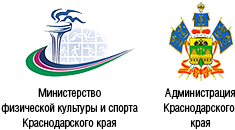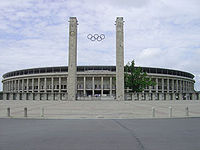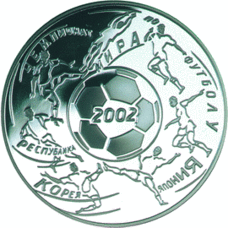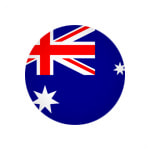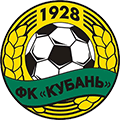Сборная Мальты по футболу. Сборная мальты по футболу
Сборная Мальты по футболу - это... Что такое Сборная Мальты по футболу?
Сборная Мальты по футболу — представляет Мальту на международных матчах по футболу.
Управляется Футбольной федерацией Мальты. Одна из слабейших сборных Европы, в последние годы результаты команды резко снизились, что привело к потере нескольких мест в рейтинге сборных, составляемым FIFA. По данным на январь 2012 года, Мальта занимает 156 место.История сборной
Ранние годы
В футбол на Мальтийских островах стали играть в конце XIX века, когда острова были Британской колонией. Первый матч был сыгран 4 марта 1882 года между солдатами гарнизона и королевскими инженерами. Начало игр и создание таких клубов, как Флориана и Санкт - Георгия помогло получить футболу популярность. Была создана Мальтийская федерация футбола. Чтобы регулировать футбольные соревнования на острове, федерация стала проводить национальный кубок. До Второй мировой войны Мальту посетили ряд известных клубов для участия в Рождественских турнирах, проводимых на острове. В 1950-е годы состоялся дебют сборной на международной арене. 24 февраля 1957 года в городе Гзира в присутствии 17 421 зрителя Мальта уступила Австрии со счетом 2:3. После серии товарищеских матчей, ничьей со сборной Туниса (0:0) и Норвегией (1:1) и победы над тем же Тунисом (1:0), мальтийская федерация присоединилась к международной ассоциации ФИФА (1959) и УЕФА (1960). С этого начался новый этап мальтийского футбола.
Чемпионат Европы 1964
Мальта подала заявку на участие в чемпионате Европы по футболу 1964 года и дебют сборной на международных соревнованиях состоялся в четверг, 28 июня 1962 года, в матче против сборной Дании. В отборочном соревновании играли два матча, дома и на выезде. Победитель проходил в следующий раунд. Мальта дважды проиграла, в Копенгагене 1:6, и дома в Гзире 1:3. Таким образом, Дания прошла дальше, выиграв по сумме двух встреч 9:2.
История турниров
Чемпионаты мира
- 1930 — 1970 — Не принимала участия
- 1974 — 2006 — Отборочный турнир
Сборная Мальты 9 раз принимала участие в отборочных кампаниях к ЧМ, 8 раз занимала последние места в своих отборочных группах и один раз — 5-е место в группе из шести участников. Одержана всего одна победа — в отборочном турнире к ЧМ-1994 в гостях над сборной Эстонии со счётом 1:0.
 Мальта Мальта | 9 | 72 | 1 | 8 | 63 | 25 | 221 | -196 |
Чемпионаты Европы
- 1960 — не принимала участия
- 1964 — отборочный турнир
- 1968 — не принимала участия
- 1972 — 2008 — отборочный турнир
Мальтийская сборная 11 раз участвовала в отборочных турнирах к ЧЕ и все 11 раз занимала последние места в своих группах. Одержаны три победы — над сборной Греции 2:0 (ЧЕ-1976), сборной Исландии 2:1 (ЧЕ-1984) и сборной Венгрии 2:1 (ЧЕ-2008)
 | 11 | 82 | 3 | 11 | 68 | 42 | 251 | -209 |
Состав сборной
Интересные факты
- Крупнейшее поражение сборной Мальты от Испании (1:12) в рамках отбора на ЕВРО-1984 сборная Нидерландов считала договорной игрой. Голландцам для выхода на турнир надо было, чтобы Испания не отыграла разницу в 10 мячей, по которой лидировала Голландия, но испанцы всё же преодолели эту разницу и попали на ЕВРО, дойдя там до финала. Факт договорной игры доказать не удалось.
Ссылки
dic.academic.ru
Сборная Мальты по футболу - WikiVisually
1. УЕФА – The Union of European Football Associations is the administrative body for association football in Europe, although several member states are primarily or entirely located in Asia. It is one of six continental confederations of world footballs governing body FIFA, UEFA consists of 55 national association members. Until 1959 the main headquarters were located in Paris, and later in Bern, in 1995, UEFA headquarters were transferred to Nyon, Switzerland. Henri Delaunay was the first general secretary and Ebbe Schwartz the first president, UEFA was founded on 15 June 1954 in Basel, Switzerland after consultation between the Italian, French, and Belgian associations. The European football union began with 25 members, that number doubled by the early 1990s, UEFA membership coincides for the most part with recognition as a sovereign country in Europe, although there are some exceptions. Some UEFA members are not sovereign states, but form part of a recognized sovereign state in the context of international law. Some UEFA members are transcontinental states, countries which had been members of the Asian Football Confederation were also admitted to the European football association, particularly Israel and Kazakhstan. Additionally some UEFA member associations allow teams from outside their associations main territory to take part in their domestic competition, saarland Football Union 1954–1956 German football association of the German Democratic Republic 1954–1990 Football Federation of the Soviet Union 1954–1991, in 1992 became Russian Football Union. The newly independent 14 Soviet Republics created their own football associations, Football Association of Yugoslavia 1954–1992, became Football Association of Serbia and Montenegro. Bosnia and Herzegovina, Croatia, Macedonia and Slovenia became independent, Football Association of Serbia and Montenegro 1992–2006, became Football Association of Serbia. Montenegro, which became independent, created its own football association, the main competition for mens national teams is the UEFA European Football Championship, started in 1958, with the first finals in 1960, and known as the European Nations Cup until 1964. It is also called UEFA or the EURO, UEFA also runs national competitions at Under-21, Under-19 and Under-17 levels. For womens national teams, UEFA operates the UEFA Womens Championship for senior sides as well as Womens Under-19. UEFA also organized the UEFA-CAF Meridian Cup with CAF for youth teams in an effort to boost youth football, UEFA launched the UEFA Regions Cup, for semi-professional teams representing their local region, in 1999. In futsal there is the UEFA Futsal Championship and UEFA Futsal Under-21 Championship, the Italian, German, Spanish and French mens national teams are the sole teams to have won the European football championship in all categories. A second, lower-ranked competition is the UEFA Europa League and this competition, for national knockout cup winners and high-placed league teams, was launched by UEFA in 1971 as a successor of both the former UEFA Cup and the Inter-Cities Fairs Cup. A third competition, the UEFA Cup Winners Cup, which had started in 1960, was absorbed into the UEFA Cup in 1999, in womens football UEFA also conducts the UEFA Womens Champions League for club teams. The competition was first held in 2001, and known as the UEFA Womens Cup until 2009, the UEFA Super Cup pits the winners of the Champions League against the winners of the Europa League, and came into being in 1973
2. Футбольная ассоциация Мальты – The Malta Football Association is the governing body of football in Malta. The Association organises the Maltese Football League and several competitions, including a knockout competition for the top teams. The Malta national football team as well as other representative teams in the younger categories compete regularly in international competitions organised by UEFA and FIFA. These include the European Championships and the World Cup, Malta also takes part in womens international competitions and competitions of Futsal The MFA manages the National stadium and the Centenary Stadium nearby. This complex is based in Ta Qali and includes training grounds, a gymnasium, the complex is also used by foreign clubs during the winter months, due to the mild temperatures of the Maltese Islands. The association is one of the oldest, being founded in 1900 with the first national league being organised in season 1909-1910, there are several important landmarks in the history of Maltese football, especially since Malta played its first official international friendly match against Austria in February 1957. The result was a narrow 3-2 defeat for Malta and it took until 1959 for the MFA to join FIFA, also joining UEFA the year after in 1960. From then onwards, Malta become an ever-present in international competitions at national teams as well as at club levels, the MFA is structured by having 53 member clubs, as well as 10 member associations. The clubs compete in four divisions, the premier, first, second, the member associations are specialised football associations who organise competitions for clubs affiliated to them. com
3. Мифсуд, Майкл – Michael Mifsud is a Maltese professional footballer who currently plays for Maltese Premier League side Valletta. He is the captain of the Maltese national team and he was voted Maltese Sports Person of the Year in 2001 and 2003. A product of Sliema Wanderers, Mifsud made his debut during the 1997–98 season, in his first season, Mifsud made six appearances and scored once, helping Sliema Wanderers to a third-place finish in the Maltese Premier League. The 1998–99 season saw Mifsud make the breakthrough and become a first-team regular, Mifsud was quickly becoming one of the hottest properties in Maltese football. He made 23 appearances and scored eight goals, as Sliema Wanderers again recorded a finish in the Maltese Premier League. Mifsuds form the previous season led to a trial with English giants Manchester United in July 1999, however, the trial did not lead to a permanent move and Mifsud returned to Sliema Wanderers for the 1999–2000 season. The failure to secure the move to Manchester United did not affect Mifsud, the club finished in fourth position in the Maltese Premier League that season. With interest in Mifsud growing, the 2000–01 season proved to be his last with the club, Mifsud helped the club to a second-place finish in the Maltese Premier League, making 25 appearances and scoring an impressive 20 goals. His form earned him his first call up to the team. He was a regular scorer with the B team in the Regionalliga which was the league in Germany back then, he also made some appearances for the senior team in the Bundesliga. Mifsud failed to make the grade with Kaiserslautern A team and his wish for regular first-team football meant he was released in the winter of 2004 and he re-signed for Sliema Wanderers for the remainder of the 2004–05 season. Mifsud went on to make 12 appearances and score eight goals, in the summer of 2005, he was snapped up by Norwegian Premier League club Lillestrøm, where he was at one stage voted the best foreign player in the league. He was the top scorer in the 2006 season with 11 goals in 19 appearances. On 5 November 2006, the last day of the Norwegian League and he declined to renew his contract with Lillestrøm to fulfil his wish to turn out for a club in a major European league. Mifsud was spotted by the ex-manager of Coventry City, Micky Adams, on 10 January 2007, Mifsud signed a two-and-a-half-year deal with Coventry City in the Football League Championship in England. However, Adams was sacked two days later, Mifsud made his début for Coventry City on 13 January 2007 in a Football League Championship match at home to Crystal Palace. Mifsud scored his first goal for Coventry City on 22 January 2007 and he then scored his second goal for Coventry in 4–1 defeat of Barnsley. He also scored at Turf Moor on 6 May 2007 against Burnley, during another impressive display, he scored a goal against Sheffield Wednesday and won the goal of the season for Coventry City
4. Национальный стадион (Мальта) – Ta Qali National Stadium is the national stadium of Malta, and is the home stadium of the Malta national football team. It stages most Maltese Premier League and cup matches, as well as international matches, the stadium seats approximately 17,000 people and it is the largest stadium in the country. The new stadium was inaugurated in December 1981, and for the first time ever, top Division League matches, over the years the association has kept the pace in improving its facilities with the aim of offering top quality facilities to its members and fans. Also there was the re-building of the 5, 000-seater East Stand and this place houses the Malta F. A. There is also a garage underneath, catering areas and ample parking space around the stadium, all facilities at the stadium are easily accessible by means of several entrances. In 2016, the Maltese Football Association announced a €1.5 million project to replace the old grass surface with a modern hybrid grass surface, the project was conducted by SIS Pitches who are renowned for other works such as the Vodafone Arena and iPro Stadium. The expenses were financed by UEFA and FIFA, with the rest being covered by the MFA. Ta’ Qali National Stadium at StadiumDB. com
5. Рейтинг сборных ФИФА – The rankings were introduced in December 1992, and eight teams have held the top position, of which Brazil have spent longest ranked first. A points system is used, with points being awarded based on the results of all FIFA-recognised full international matches, the ranking system was most recently revamped after the 2006 World Cup, with the first edition of the new series of rankings issued on 12 July 2006. The most significant change is that the rankings are now based on results over the four years instead of the previous eight years. Alternative systems have been devised, such as the World Football Elo Ratings, based on the Elo rating system used in chess and Go, ranking teams. In December 1992, FIFA first published a listing in order of its member associations to provide a basis for comparison of the relative strengths of these teams. From the following August, this list was more frequently updated, significant changes were implemented in January 1999 and again in July 2006, as a reaction to criticisms of the system. Membership of FIFA has expanded from 167 to 209 since the rankings began, the ranking formula used from August 1993 until December 1998 was very simplistic and quickly became noticed for its lack of supporting factors. When the rankings were introduced, a team received one point for a draw or three for a victory in FIFA-recognised matches – much the same as a traditional league scoring system. This was a simplistic approach, however, and FIFA quickly realised that there were many factors affecting international matches. In order to meet the objective of fairly and accurately comparing the strengths of various national sides. In January 1999, FIFA introduced a system of ranking calculation. For the ranking all matches, their scores and importance were all recorded, only matches for the senior mens national team were included. Separate ranking systems were used for other national sides such as womens and junior teams. The womens rankings were, and still are, based on a procedure which is a version of the Football Elo Ratings. FIFA announced that the system would be updated following the 2006 World Cup. The evaluation period was cut from eight to four years, goals scored and home or away advantage are no longer taken into account, and other aspects of the calculations, including the importance attributed to different types of match, have been revised. The first set of revised rankings and the methodology were announced on 12 July 2006. This change is rooted at least in part in widespread criticism of the ranking system
6. Сборная Австрии по футболу – The Austria national football team is the association football team that represents the country of Austria in international competition and is controlled by the Austrian Football Association. Austria has qualified for seven World Cups, most recently in 1998, the country played in the European Championship for the first time in 2008 when it co-hosted the event with Switzerland and most recently qualified in 2016. The Austrian Football Association was founded on 18 March 1904 in the Austro-Hungarian Empire, the team enjoyed success in the 1930s under coach Hugo Meisl becoming a dominant side in Europe and earning the nickname Wunderteam. The teams star was Matthias Sindelar, on 16 May 1931, they were the first continental European side to defeat Scotland. In the 1934 FIFA World Cup, Austria finished fourth after losing 1–0 to Italy in the semi-finals and they were runners-up in the 1936 Olympics, again losing to Italy 2–1, despite having been beaten in quarter-finals by Peru, following the Peruvians withdrawal. However, according to an investigation, the victory by Peru was deliberately annulled by Adolf Hitler to favour the Austrians. The team then qualified for the 1938 FIFA World Cup finals, on 28 March, FIFA was notified that the Austrian FA had been abolished, resulting in the nations withdrawal from the World Cup. Instead the German team would represent the former Austrian territory, in a later rematch, the Germans took revenge, winning 9–1. As a result, five players from Austria Wien, Rapid Wien and Vienna Wien were part of the team only managed a 1–1 draw in Round 1 against Switzerland. With Rapid Wiens forward Pesser having been sent off, and not satisfied with two others, Herberger had to alter the line-up on six positions to fulfill the 6,5 quota again, after World War II, Austria was again separated from Germany. Austrias best result came in 1954 with a team starring midfielder Ernst Ocwirk and they lost in the semi-finals 6–1 to eventual champions Germany, but finished third after beating defending champions Uruguay 3–1. This remains their best result ever, and unfortunately the last time for decades that Austria reached the end round of a major tournament, over the years, a strong yet mainly lopsided rivalry with Germany developed. At the 1958 World Cup in Sweden, the Austrian team was a disappointment, defeats to the eventual champions Brazil, the emerging Soviet Union and a draw against a weakened England prevented the team to reach the next round. Still holding to the popularity in the country, under new coach Decker again made an international sensation in the era. In front of a crowd of over 90,000 spectators, made possible by the expansion of the Prater Stadium. Due to lack of money, however, Austria decided not to participate at the 1962 World Cup in Chile, and the team fell apart. Abrupt end of Austria’s success in the postwar period eventually formed the clear 0–6 loss against Czechoslovakia in 1962, of many players. After the end of Decker era, the team was unable for a time to connect to the old successes
7. Валлетта – Valletta is the capital city of Malta, colloquially known as Il-Belt in Maltese. The historical city has a population of 6,444, while the area around it has a population of 393,938. Valletta is the southernmost capital of Europe and the second southernmost capital of the European Union after Nicosia, Valletta contains buildings from the 16th century onwards, built during the rule of the Order of St. John also known as Knights Hospitaller. The City of Valletta was officially recognised as a World Heritage Site by UNESCO in 1980, the official name given by the Order of Saint John was Humilissima Civitas Valletta—The Most Humble City of Valletta, or Città Umilissima in Italian. The building of a city on the Sciberras Peninsula, originally called Xaghriet Mewwija, had proposed by the Order of Saint John as early as 1524. Back then, the building on the peninsula was a small watchtower dedicated to Erasmus of Formia. In 1552, the watchtower was demolished and the larger Fort Saint Elmo was built in its place, in the Great Siege of 1565, Fort Saint Elmo fell to the Ottomans, but the Order eventually won the siege with the help of Sicilian reinforcements. The victorious Grand Master, Jean de Valette, immediately set out to build a new fortified city on the Sciberras Peninsula to fortify the Orders position in Malta, the city took his name and was called La Valletta. The Grand Master asked the European kings and princes for help, pope Pius V sent his military architect, Francesco Laparelli, to design the new city, while Philip II of Spain sent substantial monetary aid. The foundation stone of the city was laid by Grand Master de Valette on 28 March 1566 and he placed the first stone in what later became Our Lady of Victories Church. De Valette died from a stroke on 21 August 1568 at age 74, originally interred in the church of Our Lady of the Victories, his remains now rest in St. Johns Co-Cathedral among the tombs of other Grand Masters of the Knights of Malta. Francesco Laparelli was the principal designer and his plan departed from medieval Maltese architecture. He designed the new city on a grid plan. The streets were designed to be wide and straight, beginning centrally from the City Gate and ending at Fort Saint Elmo overlooking the Mediterranean and his assistant was the Maltese architect Girolamo Cassar, later oversaw the construction of the city himself after Laparellis death in 1570. The Ufficio delle Case regulated the building of the city as a planning authority, seven Auberges were built for the Orders Langues, and these were complete by the 1580s. An eighth Auberge, Auberge de Bavière, was added in the 18th century. During António Manoel de Vilhenas reign, a town began to form between the walls of Valletta and the Floriana Lines, and this evolved from a suburb of Valletta to Floriana, a town in its own right. In 1749, Muslim slaves plotted to kill Grandmaster Pinto and take over Valletta, in 1798, the Order left the islands and the French occupation of Malta began
8. Мальта – Malta, officially known as the Republic of Malta, is a Southern European island country consisting of an archipelago in the Mediterranean Sea. It lies 80 km south of Italy,284 km east of Tunisia, the country covers just over 316 km2, with a population of just under 450,000, making it one of the worlds smallest and most densely populated countries. The capital of Malta is Valletta, which at 0.8 km2, is the smallest national capital in the European Union, Malta has one national language, which is Maltese, and English as an official language. John, French and British, have ruled the islands, King George VI of the United Kingdom awarded the George Cross to Malta in 1942 for the countrys bravery in the Second World War. The George Cross continues to appear on Maltas national flag, the country became a republic in 1974, and although no longer a Commonwealth realm, remains a member state of the Commonwealth of Nations. Malta was admitted to the United Nations in 1964 and to the European Union in 2004, in 2008, Catholicism is the official religion in Malta. The origin of the term Malta is uncertain, and the modern-day variation derives from the Maltese language, the most common etymology is that the word Malta derives from the Greek word μέλι, meli, honey. The ancient Greeks called the island Μελίτη meaning honey-sweet, possibly due to Maltas unique production of honey, an endemic species of bee lives on the island. The Romans went on to call the island Melita, which can be considered either as a latinisation of the Greek Μελίτη or the adaptation of the Doric Greek pronunciation of the same word Μελίτα. Another conjecture suggests that the word Malta comes from the Phoenician word Maleth a haven or port in reference to Maltas many bays, few other etymological mentions appear in classical literature, with the term Malta appearing in its present form in the Antonine Itinerary. The extinction of the hippos and dwarf elephants has been linked to the earliest arrival of humans on Malta. Prehistoric farming settlements dating to the Early Neolithic period were discovered in areas and also in caves. The Sicani were the tribe known to have inhabited the island at this time and are generally regarded as being closely related to the Iberians. Pottery from the Għar Dalam phase is similar to found in Agrigento. A culture of megalithis temple builders then either supplanted or arose from this early period, the temples have distinctive architecture, typically a complex trefoil design, and were used from 4000 to 2500 BCE. Animal bones and a knife found behind an altar stone suggest that temple rituals included animal sacrifice. Tentative information suggests that the sacrifices were made to the goddess of fertility, the culture apparently disappeared from the Maltese Islands around 2500 BC. Archaeologists speculate that the builders fell victim to famine or disease
9. Сборная Лихтенштейна по футболу – The Liechtenstein national football team is the national football team of the Principality of Liechtenstein and is controlled by the Liechtenstein Football Association. The organisation is known as the Liechtensteiner Fussballverband in German, the teams first match was an unofficial match against Malta in Seoul, a 1–1 draw in 1981. Their first official match came two years later, a 0–1 defeat from Switzerland. Liechtensteins largest win, a 4–0 win over Luxembourg in a 2006 FIFA World Cup qualifier on 13 October 2004, was both its first away win ever and its first win in any World Cup qualifier. Liechtenstein are only a relatively recent affiliate to FIFA, and did not participate in any qualifying series until the UEFA Euro 1996 qualifiers, there they managed to surprise the Republic of Ireland by holding them to a 0–0 draw on 3 June 1995. On 14 October 1998, they managed their first victory in a campaign by winning 2–1 against Azerbaijan in a UEFA Euro 2000 qualifying match. Since then, the presence of Liechtenstein clubs in the Swiss league system, the Euro 2004 qualifiers saw Liechtenstein improve to the extent they restricted England to 2–0 wins. The 2006 World Cup qualifiers, however, brought even better results as two wins over Luxembourg and draws against both Slovakia and Portugal meant that Liechtenstein finished with eight points. From their qualifying campaigns, the one that received the most points was their 2006 FIFA World Cup campaign. The following players were called up in the last 12 months, as recorded in the subsequent book Stamping Grounds, Liechtensteins Quest for the World Cup, Liechtenstein lost all eight games without scoring a goal. RSSSF archive of most capped players and highest goalscorers Liechtensteiner Fussballverbund Die Elf, documentary film about Liechtenstein national team
10. Та-Кали – Ta Qali is a village in Malta, a wide open space in the middle of Malta containing the national stadium, Ta Qali National Park and a national vegetable market which is locally known as the Pitkalija. Shortly before World War II, the area was used to build a military aerodrome, RAF Ta Kali was operational throughout the war and continued to be used as an RAF airfield until the mid-1950s. Latterly, U. K. -based squadrons visited Ta Kali as part of their annual proficiency training, since the departure of the RAF, the location has been transformed into a recreational area. The area is small in scale but considered by some in Malta as a place to go for a picnic. The National Park also includes an amphitheatre, a number of international concerts were staged at the park, including artists as diverse as Status Quo, Deep Purple, Fish, Iron Maiden, Demis Roussos, Alannah Myles, Bonnie Tyler and many others. International artists such as Riccardo Fogli have also planted their own trees in the Park, the newly built U. S. Embassy stands across from the TaQali National Park. In July,2011 the embassy relocated to TaQali from Floriana where it stood for fifty years. There is also the Malta Aviation Museum where one can find different types of related to Maltese aviation history. 13 Hours, The Secret Soldiers of Benghazi is a 2016 American biographical war movie filmed in Malta and Morocco, the film follows the Sept 11-12,2012, waves of Islamic militant attacks on that U. S. diplomatic compound in Libya. Triq il-Mosta Triq il-Pitkali Triq ir-Rabat u l-Belt Valletta Triq l-Imtarfa u r-Rabat Vjal l-Istadju Nazzjonali
wikivisually.com
Сборная Мальты по футболу - Википедия
Материал из Википедии — свободной энциклопедии
Текущая версия страницы пока не проверялась опытными участниками и может значительно отличаться от версии, проверенной 9 ноября 2014; проверки требуют 20 правок.
 Текущая версия страницы пока не проверялась опытными участниками и может значительно отличаться от версии, проверенной 9 ноября 2014; проверки требуют 20 правок.
Текущая версия страницы пока не проверялась опытными участниками и может значительно отличаться от версии, проверенной 9 ноября 2014; проверки требуют 20 правок. Сборная Мальты по футболу — представляет Мальту на международных матчах по футболу. Управляющая организация — Футбольная ассоциация Мальты.
По состоянию на 10 августа 2017 года сборная в рейтинге ФИФА занимает 190-е место[1], а в рейтинге УЕФА по состоянию на 14 ноября 2016 года[2] — 52-е.
История сборной[ | ]
Ранние годы[ | ]
В футбол на Мальтийских островах стали играть в конце XIX века, когда были колонией Великобритании. Первый матч был сыгран 4 марта 1882 года между солдатами гарнизона и королевскими инженерами. Начало игр и создание таких клубов, как Флориана и Санкт-Георгия, помогло получить футболу популярность. Была создана Мальтийская федерация футбола. Чтобы регулировать футбольные соревнования на острове, федерация стала проводить национальный кубок. До Второй мировой войны Мальту посетили ряд известных клубов для участия в Рождественских турнирах, проводимых на острове.В 1950-е годы состоялся дебют сборной на международной арене. 24 февраля 1957 года в городе Гзира в присутствии 17 421 зрителя Мальта уступила Австрии 2:3. После серии товарищеских матчей, ничьей со сборной Туниса (0:0) и Норвегией (1:1) и победы над тем же Тунисом (1:0), мальтийская федерация присоединилась к международной ассоциации ФИФА (1959) и УЕФА (1960). С этого начался новый этап мальтийского футбола.
Чемпионат Европы 1964[ | ]
Мальта подала заявку на участие в чемпионате Европы по футболу 1964 года и дебют сборной на международных соревнованиях состоялся в четверг, 28 июня 1962 года, в матче против сборной Дании. В отборочном соревновании играли два матча, дома и на выезде. Победитель проходил в следующий раунд. Мальта дважды проиграла: в Копенгагене 1:6 и дома в Гзире 1:3. Таким образом Дания прошла дальше, выиграв по сумме двух встреч 9:2.
История турниров[ | ]
Чемпионаты мира[ | ]
- 1930 — 1970 — Не принимала участия
- 1974 — 2018 — Отборочный турнир
Сборная Мальты 9 раз принимала участие в отборочных турнирах к чемпионатам мира, 8 раз занимала последние места в своих отборочных группах и один раз — 5-е место в группе из шести участников. Одержано всего две победы — в отборочном турнире к ЧМ-1994 в гостях 12 мая 1993 года над Эстонией 1:0 (гол: Кристиан Лаферла, 15 мин.) и в отборочном турнире к ЧМ-2014, опять же в гостях, 7 июня 2013 года над Арменией с тем же счётом 1:0 (гол: Майкл Мифсуд, 8 мин.).
 Мальта Мальта | 9 | 98 | 2 | 9 | 87 | 32 | 290 | -258 |
Чемпионаты Европы[ | ]
- 1960 — не принимала участия
- 1964 — отборочный турнир
- 1968 — не принимала участия
- 1972 — 2016 — отборочный турнир
Мальтийская сборная 11 раз участвовала в отборочных турнирах к ЧЕ и все 11 раз занимала последние места в своих группах. Одержаны три победы — над сборной Греции 2:0 (ЧЕ-1976), сборной Исландии 2:1 (ЧЕ-1984) и сборной Венгрии 2:1 (ЧЕ-2008)
 Мальта Мальта | 11 | 102 | 3 | 14 | 85 | 49 | 288 | -239 |
Текущий состав[ | ]
Следующие игроки были вызваны в состав сборной главным тренером для участия в матче отборочного турнира чемпионата мира по футболу 2018 против сборной Словакии (26 марта 2017).
Игры и голы приведены по состоянию на 15 ноября 2016 года:Интересные факты[ | ]
- сборной Мальты от Испании (1:12) в рамках отбора на ЕВРО-1984 сборная Нидерландов считала договорной игрой. Голландцам для выхода на турнир надо было, чтобы Испания не отыграла разницу в 10 мячей, по которой лидировала Голландия, но испанцы всё же преодолели эту разницу и попали на ЕВРО, дойдя там до финала. Факт договорной игры доказать не удалось.
Примечания[ | ]
Ссылки[ | ]
encyclopaedia.bid

